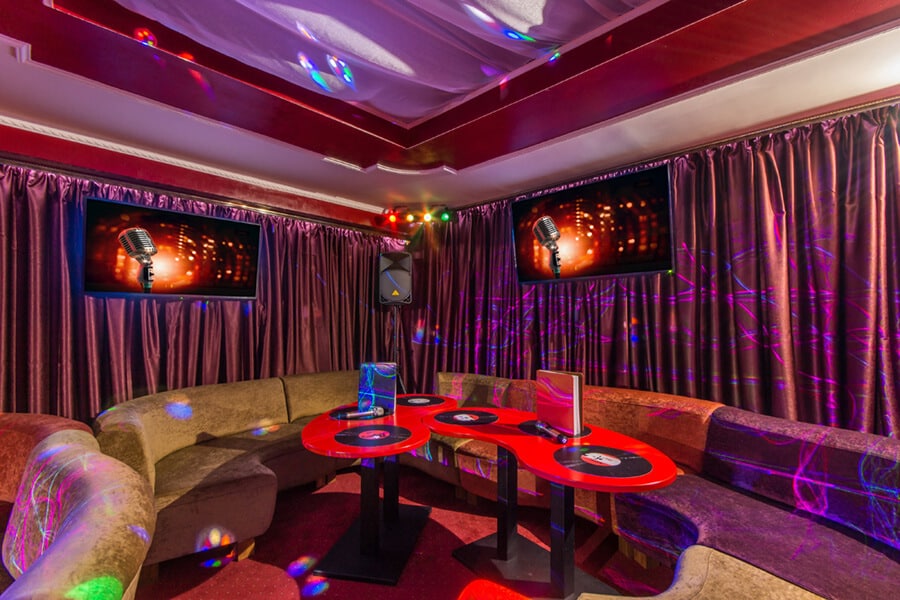It is this time of year, where the drinks begin to pour more frequently, families gathering in a jolly manner and the holidays give a perfect excuse to sing your heart out! Karaoke music has been a beacon of enjoyment for centuries. Upon its creation, Karaoke music has managed to become a household entity.
“Isaac! Get up and sing! C’mon, show us your stuff!”
I would hear these encouraging phrases every Tuesday night at the local bar in my hometown. After a long day of stressful university work and boring 9am to 5pm jobs, karaoke was my beacon of hope.
It felt like there was no better feeling than to hold the microphone in my hands while eagerly looking upon the karaoke screen, belting out every note possible to have the time of my life! Karaoke music has been a fun activity for years! Through its interesting history, karaoke music continues to bring people together. But, where did this fantastic musical interpretation originate?
Karaoke Brings People Together
Dated back to is prominent creation, a karaoke machine is a device that specifically plays instrumental tracks with a wide selection of song material in which the user sings along to.
This concept has been around for centuries and used for practical efforts for certain performance settings. The idea of creating recordings without lead vocals have been used in situations where bands are financially or logistically not practical for certain settings, thus growing into a marketable music entity for consumer enjoyment.
Music listeners have sung along to many classics such as Diamonds Are A Girl’s Best Friend by Marilyn Monroe or songs like Lean on Me by singer Bill Withers. It was the musical styling of sing-along that was seen as the parent of karaoke music.
Through the 10-year span of the 1960 to 1970s, the expansion of portable music audio listening efforts paved the way for more music sharing abilities. This notion also was a valuable reason for the easing of band usage by singers and entertainers as the global demand of musical entertainment exceeded.
It was the popularity of these sing-along entities that push the revolution of cassette tapes. According to Wikipedia.com, cassette tapes are analog magnetic tape-recording format for audio recording and playback.
With the social musical growth of karaoke and sing-along, cassette tapes began to become a household necessity. From 1961 through 1966, karaoke began more visible. With the American Television show Sing Along with Mitch starring Mitch Miller, lyrics of the show material were seen at the bottom of the screen for home audience involvement.
Who Made Karaoke?

The long debate of where karaoke originated continues to be a topic of discussion. Some say that the karaoke styled machine was developed and created in 1971 by Daisuke Inoue, a Japanese musician in Kobe, Japan.
The story has been told that the singer was frequently asked to provide recordings of his musical material so that listeners could sing along after the amazing shows. The musician realised its potential business and created a tape recorder that played songs for a 100-yen coin.
Instead of giving the recording systems out to various individuals, the musician leased the recorders out so that stores did not have to buy new songs on their own.
As the machine and musical style began to grow in popularity, karaoke spread to the East and Southeast Asia regions during the 1980, along with other parts of the world. Today, Japan is known for this karaoke domination.
It has been a long tradition to provide the music entertainment at dinner or for various party gatherings. From restaurants to hotels, the karaoke box was a phenomenon. In 2004, Inoue was awarded the Nobel Peace Prize for inventing karaoke.
As the music industry began to recognise the power of karaoke, lounges and nightclubs began to use the machine as a promotional and profitable object for young adult entertainment.
In the 1990s, karaoke became popular again in the United States along with Canada, Australia and other Western countries.
In-home karaoke machines developed but did not find tremendous success in the US. As a result, creators would begin to disassociate the machines of only karaoke purposes and began to produce them as ‘home theatre systems’ to enhance television and movie watching.
The home theatre systems became such a polarizing figure for US households, that karaoke was conducted as a side feature.
Regardless of where the fun musical entity was created, karaoke is truly such a fun time! Karaoke has made the listening experience more interactive and relatable to the known musical individuals. So, for your next holiday festivities: Grab a mic, put on some karaoke tunes and let the fun times roam!
Photos: Shutterstock
More music for your eyes:
Support us!
All your donations will be used to pay the magazine’s journalists and to support the ongoing costs of maintaining the site.
Share this post
Interested in co-operating with us?
We are open to co-operation from writers and businesses alike. You can reach us on our email at [email protected]/[email protected] and we will get back to you as quick as we can.










